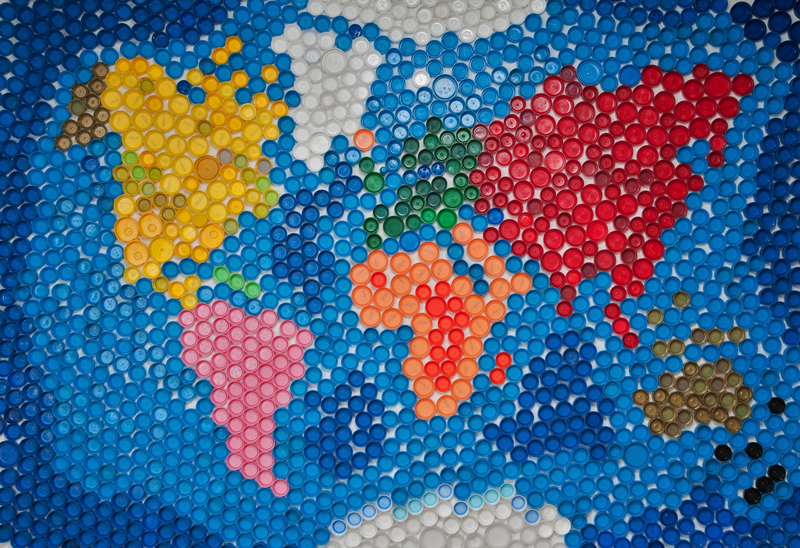Transforming Trash: The Art of Environmentalism
Posted on 09/02/2024
In today's world, the issue of waste management and environmental conservation is becoming increasingly important. As human activities continue to impact the environment, more and more people are taking a stand against the unnecessary generation of waste. One way that this has been done is through the transformation of trash into art. This innovative approach to environmentalism not only helps reduce waste but also raises awareness about the need for responsible waste management practices. In this article, we will delve deep into the concept of transforming trash into art and explore its potential as a tool for environmentalism.
What is Transforming Trash?
Transforming trash, also known as trash art or recycled art, is the process of using discarded materials or items that would otherwise end up in landfills to create new pieces of art. These materials can include plastic bottles, cans, paper, old clothes, and even electronic waste. The idea behind this form of art is to repurpose these unwanted items and give them a new life.

Environmental Benefits of Transforming Trash
The transformation of trash into art presents several benefits to the environment. First and foremost, it reduces the amount of waste that ends up in landfills. According to the Environmental Protection Agency (EPA), Americans alone generated 292 million tons of municipal solid waste in 2018, with only about 32% being recycled (EPA.gov). By transforming trash into art, we can divert some of this waste from ending up in landfills and instead give it a second life.
Moreover, this form of art promotes responsible consumption and waste reduction. It challenges our society's throwaway culture by showcasing how ordinary items can be transformed into something beautiful and valuable. It encourages us to rethink our relationship with material possessions and make more sustainable choices.
The Role of Art in Environmentalism
Art has always been a powerful tool for raising awareness and promoting social change. By using discarded materials as their medium, artists create thought-provoking pieces that spark conversations about waste management and environmental conservation. These artworks serve as a reminder of the impact our actions have on the environment, and they can inspire people to make positive changes.
Furthermore, trash art has the potential to reach a wider audience than traditional forms of environmental activism. Galleries, exhibitions, and public installations featuring recycled art attract people from different walks of life, making it an effective way to engage with diverse communities.

Pros and Cons of Transforming Trash
Pros:
1. Reduces waste: As mentioned earlier, transforming trash into art reduces the amount of waste ending up in landfills.
2. Promotes responsible consumption: Creating art out of discarded materials encourages us to be more mindful of our consumption habits and make more sustainable choices.
3. Raises awareness: Trash art serves as a powerful medium for raising awareness about waste management and environmental issues.
4. Engages with communities: It has the potential to reach a wider audience and engage with diverse communities.
Cons:
1. Limited impact: While trash art can create awareness, it may not lead to significant changes in individual behavior or policies related to waste management.
2. Health hazards: Some materials used in creating trash art, such as electronic waste, can pose health hazards if not handled properly.
3. Time-consuming process: Creating high-quality trash art pieces requires time and effort, which may not be feasible for all artists.
Tips for Creating Trash Art
1. Start small: If you're new to creating trash art, start small with simple projects using easily accessible materials such as plastic bottles or cans.
2. Utilize online resources: There are plenty of DIY tutorials and online resources available that provide step-by-step instructions for creating different types of trash art.
3. Be creative: Don't limit yourself to traditional forms of art; experiment with different techniques and materials to create unique pieces.
4. Collaborate with others: Consider collaborating with other artists or organizations to create larger and more impactful pieces of trash art.
5. Properly dispose of hazardous materials: If you're using electronic waste or other hazardous materials, make sure to dispose of them properly according to local regulations.
Takeaways
Transforming trash into art is a creative and effective way to address the issue of waste management and promote environmentalism. It not only helps reduce waste but also raises awareness and engages with communities in a unique way. As individuals, we can make a difference by incorporating principles of responsible consumption and waste reduction into our daily lives. And as a society, we must continue to push for systemic changes towards more sustainable practices.
In conclusion, trash art is more than just creating beautiful pieces out of discarded materials; it is a form of activism that challenges the status quo and aims to bring about positive change. By supporting and practicing this innovative approach to environmentalism, we can collectively work towards a cleaner and greener future for generations to come.

